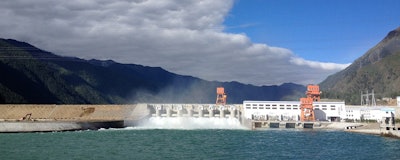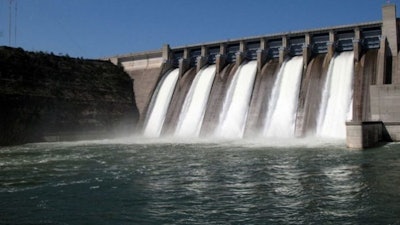
Hydropower is the most important and widely-used renewable source of energy. Hydropower represents about 17 percent of total electricity production. Industries also use other renewable sources, including wood, municipal waste, landfill gas, biomass, and geothermal energy to generate electricity.
For Similar Content: Subscribe to Daily Newsletters
China is the largest producer of hydroelectricity, followed by Canada, Brazil, and the United States. Approximately two-thirds of the hydroelectric economic potential remains to developed. Untapped hydro resources are still abundant in Latin America, Central Africa, India, and China.
Hydropower has the ability to generate electricity without emitting greenhouse gasses. However, it can also cause environmental and social threats, such as damaged wildlife habitat, harmed water quality, obstructed fish migration, and diminished recreational benefits of rivers.
A new study conducted by researchers from the Lawrence Berkeley National Laboratory weighs these issues as they relate to a hydropower project undergoing relicensing in California.
 Although most energy in the United States is produced by fossil-fuel and nuclear power plants, hydroelectricity is still important to the nation. Nowadays, huge power generators are placed inside dams. Water flowing through the dams spin turbine blades (made out of metal instead of leaves) which are connected to generators. Power is produced and is sent to homes and businesses. (U.S. Geological Survey)
Although most energy in the United States is produced by fossil-fuel and nuclear power plants, hydroelectricity is still important to the nation. Nowadays, huge power generators are placed inside dams. Water flowing through the dams spin turbine blades (made out of metal instead of leaves) which are connected to generators. Power is produced and is sent to homes and businesses. (U.S. Geological Survey)Pros of Hydropower
Producing electricity using hydropower has some advantages over other power-producing methods:
- Hydroelectricity is a renewable energy source. Hydroelectricity uses the energy of running water, without reducing its quantity, to produce electricity.
- Hydroelectricity makes it possible to utilize other renewable sources. The flexibility and storage capacity of hydroelectric power plants make them more economical in supporting the use of intermittent sources of renewable energy, such as solar energy.
- Hydroelectricity promotes guaranteed energy and price stability. River water is a domestic resource which, unlike fuel or natural gas, is not subject to market fluctuations.
- Hydroelectricity helps fight climate changes. The hydroelectric life cycle produces very small amounts of greenhouse gasses.
- Hydroelectricity improves the air we breathe. The power plants don’t release pollutants into the air, and hydroelectric developments don’t generate toxic by-products.
Cons of Hydropower
Hydroelectric power is not perfect, however, and does have some significant disadvantages:
- Hydropower is non-polluting, but does have environmental impacts. Hydropower facilities can affect land use, homes, and natural habitats in the dam area. Reservoirs may cover people’s homes, important natural areas, agricultural land, and archaeological sites.
- Reservoir construction is “drying up” in the U.S. The construction of surface reservoirs has slowed considerably in recent years. Building a dam and reservoir to support hydroelectric power takes a lot of money, time, and construction, and most of the suitable sports to locate hydro plants have already been taken.
- Hydroelectricity is hydrology dependent. The system depends on precipitation levels, which can fluctuate from year to year, causing instability.
- In some cases, hydroelectricity can disrupt wildlife habitat. Hydroelectric power plants can cause a loss or modification of fish habitat, and lead to the entrapment of fish and the restriction of their passages.
- In some cases, hydroelectricity can cause changes in reservoir and stream water quality. Operating a hydroelectric power plant may alter the water temperature and the river’s flow. These changes may harm native plants and animals in the river and on land.
 “While dams produce renewable hydropower, their construction and operation has detrimental environmental impacts,” Utah State University scientist Jack Schmidt said. (U.S. Bureau of Reclamation)
“While dams produce renewable hydropower, their construction and operation has detrimental environmental impacts,” Utah State University scientist Jack Schmidt said. (U.S. Bureau of Reclamation)Conclusion
Along with highlighting the pros and cons of hydropower, the study also reveals that the positive and negative effects are not being adequately examined in the hydropower relicensing process. The study outlines opportunities to reduce the negative environmental impacts of hydropower without significant economic drawbacks. To do this, scientists recommend strategic planning and mitigation practices to temper dams’ impacts on surrounding communities.
In the future, hydroelectric trends will lead to the building of small-scale hydro plants that can generate electricity for a single community.























